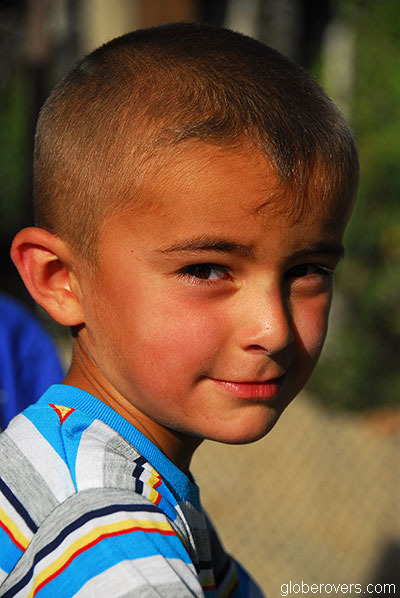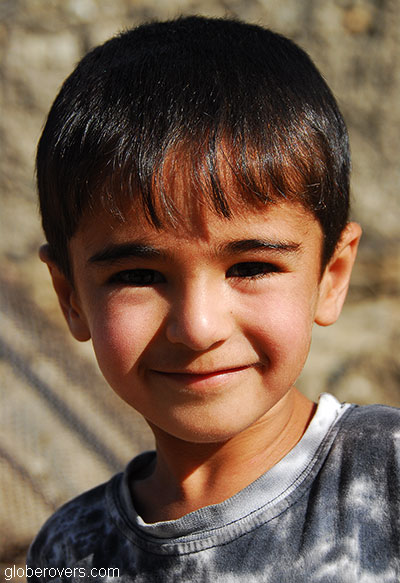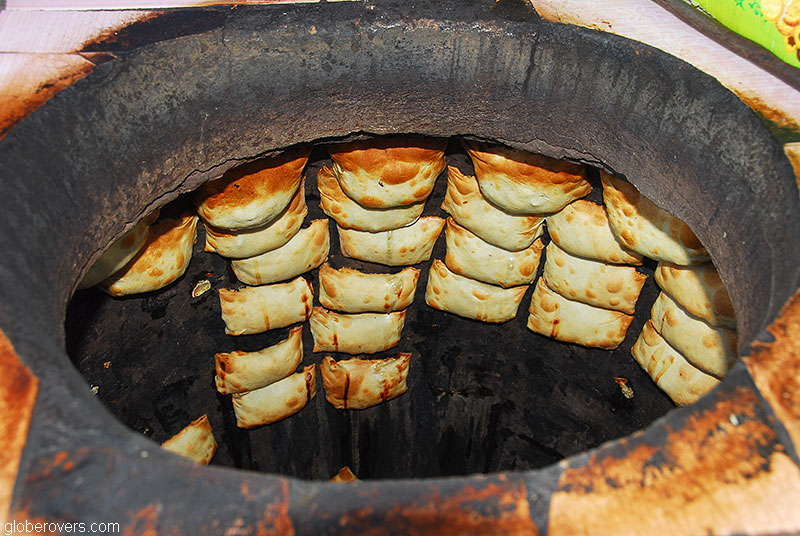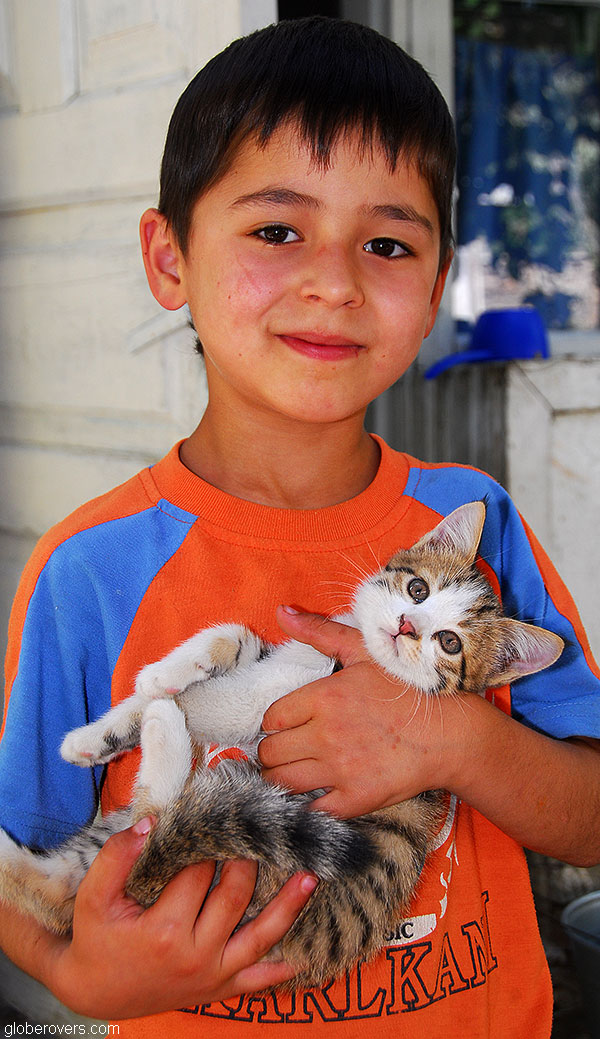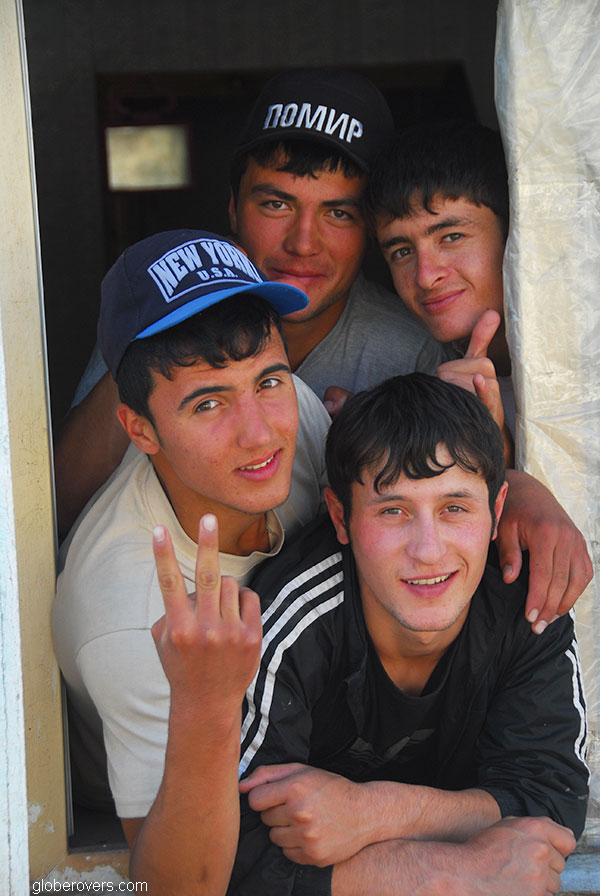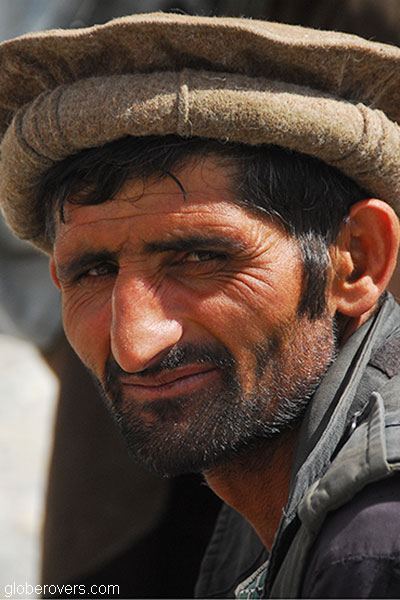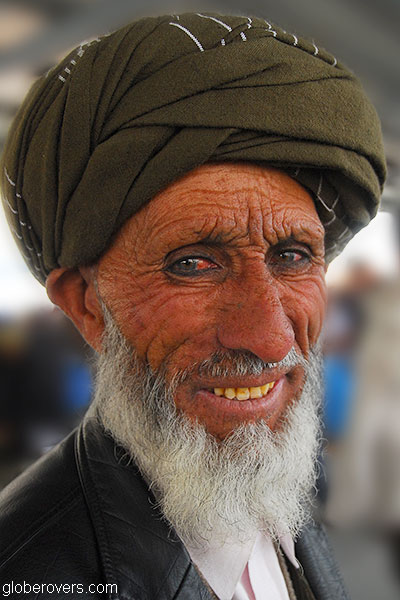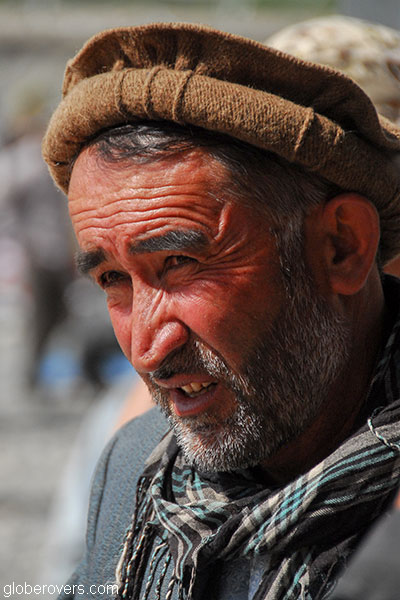
Join us as we start our journey in Tajikistan’s capital, Dushanbe, a city still firmly locked in the past with the Soviet influence visible in the people and architecture. We then board an exhilarating flight on a small turboprop plane as it flies around the majestic mountain peaks, past glaciers, before landing along the Panj River near the town of Khorog.
As the gateway to Afghanistan and its Wakhan Corridor, Khorog is a small, friendly town at the confluence of the Panj and Ghund Rivers nestled among the mountains.
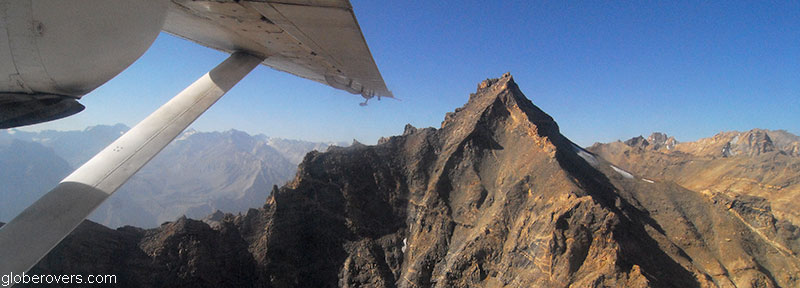
After a few days in Khorog, we embark on our journey with a 4×4 vehicle to the south, and then east, along the valley next to the Tajik—Afghan border. Tajikistan’s Wakhan Valley lies on the north side of the Panj River along the Afghan Wakhan Corridor to the south.
The valley is known for its fertile soil along the river, ancient fortresses, and quaint villages.
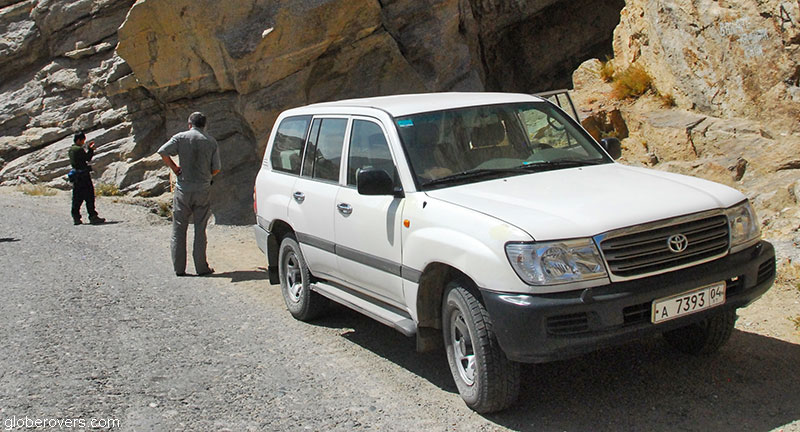
We continue further east to Murghab and then drive north along the China border to Karakul Lake. This brackish black-coloured lake lies at a stunning altitude of 3,900 m (12,800 ft). While water levels are often at historical lows, the lake is still impressive albeit somewhat mysterious.
From the lake, we cross into Kyrgyzstan and head east to the China border-crossing at Irkeshtam and enter Xinjiang, an autonomous territory in northwest China. Alternatively, continue to explore Kyrgyzstan.

Why travel to Tajikistan’s Wakhan Valley?
- The low-down: Tajikistan offers endless adventures to intrepid travellers who are not afraid of the unknown. It offers stunning highland landscapes along the famous Pamir Highway, blue-coloured alpine lakes, and the scenic Pamir & Fann Mountain ranges. Friendly people and great food. Little tourist infrastructure makes this country truly an adventure.
- The brightest highlight: Hiking in the Pamir Mountains and travelling slowly along the Wakhan Valley to the north of Afghanistan’s Wakhan Corridor are both must-do’s in Tajikistan.
- Intrepid destination: One of the best intrepid destinations in the world. It is regarded fairly safe to travel here with no tourists in sight – only a few rugged explorers if you stay off the beaten track, which is most of the country.
- Globerovers score (10 is highest): Tajikistan is incredible so it gets a solid 9.4 out of 10.

Table of Contents
Dushanbe as Starting-Point
Getting to Dushanbe, the Tajik capital, is still a challenge. Few airlines, even from neighbouring countries, fly into this small city. An interesting entry by land is from Samarkand in Uzbekistan. A long 10.5-hour train ride goes through mostly desert landscapes and some mountainous regions and also stops at a few small villages.

When the train from Samarkand eventually comes to a standstill in the small Uzbek town of Denau, to the southwest of Dushanbe, take a 30-minute taxi ride to the Uzbek / Tajik border. This is another border crossing in Central Asia with ample opportunities to create long-lasting memories – whether good or bad, you won’t forget them.
From the taxi drop-off point on the Uzbek side, it is a 1.5 km (1 mi) walk across the border to where a Tajik taxi can pick you up for the drive to Dushanbe. Be patient as you go through a few border checkpoints. Your luggage may be thoroughly searched too. This border crossing is not busy and is used by few travellers from outside the region.
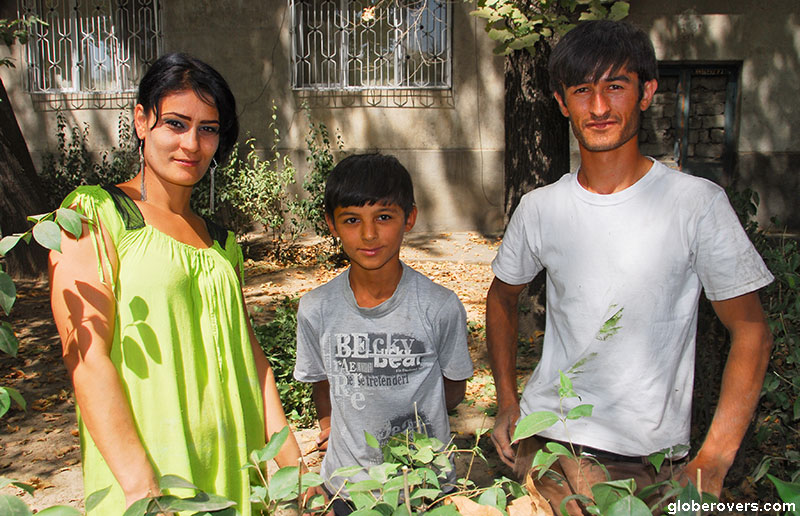
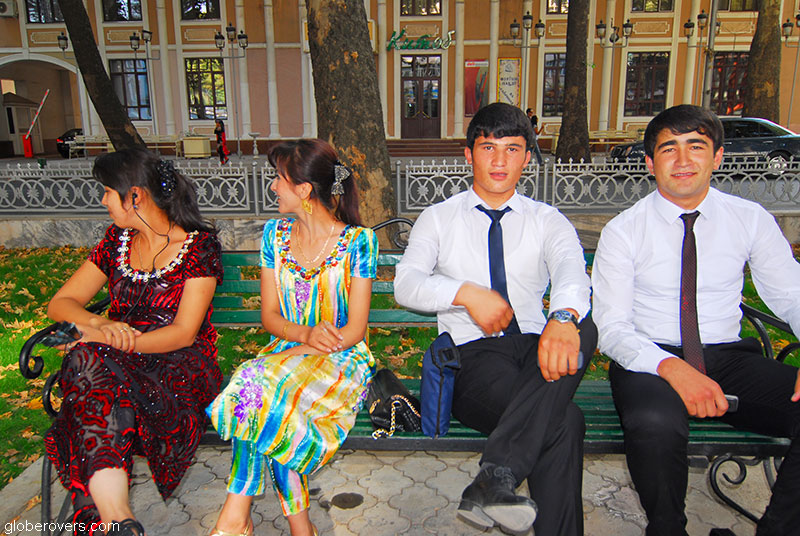
Ensure your Tajik visa and GBAO (Gorno-Badakhshan Autonomous Province) permit are stamped in your passport if you intend to travel into the Pamir region, including the Pamir Highway to eastern Tajikistan. The drive from the border to central Dushanbe takes a little more than an hour.
With most of the population belonging to the Persian-speaking Tajik ethnic group who shares their language with Afghanistan and Iran, this is a rugged country with tough but very hospitable and beautiful people.
Drop into the iconic Vakhsh Hotel which is centrally located and right next to the Ayni Opera and Ballet Theatre (Tajik State Academic Theatre) along the wide tree-lined Rudaki Avenue. While the hotel is screaming for a massive renovation, it has a rich yet tumultuous history which started in 1936. During World War II (in this part of the world referred to as the Great Patriotic War), the hotel was used as the military hospital.

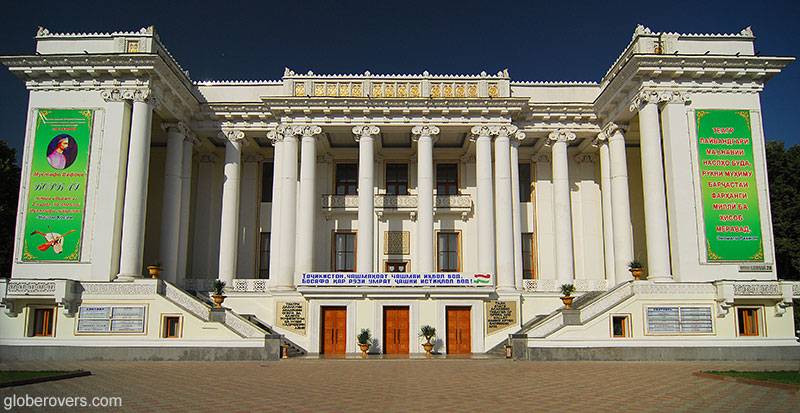
During the more recent civil war the hotel was occupied by bands of bearded mujahedin rebels and peppered with bullets.
In the lobby, find the typical Russian “small hole in the wall” where an old lady will peak through to take your passport and payment. As you walk through the dimly lit halls and into your room with very high ceilings and historical furniture, you can’t help but imagine what your room must have gone through since 1936.
UPDATE: THIS HOTEL RECENTLY WAS RENOVATED AND IS NOW CALLED THE “Rohat Hotel”.
Other attractions in Dushanbe include the Lahuti Drama Theatre, Palace of Nations, Writer’s Union Building, Statue of Ismail Samani, and the beautiful flower gardens in spring and summer.
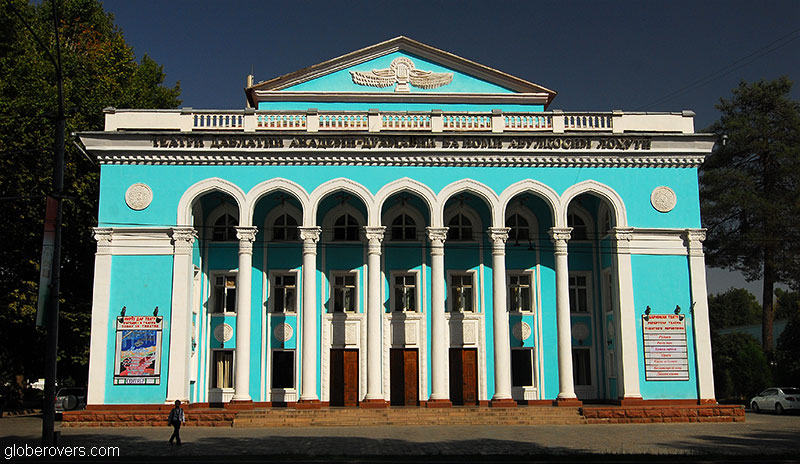
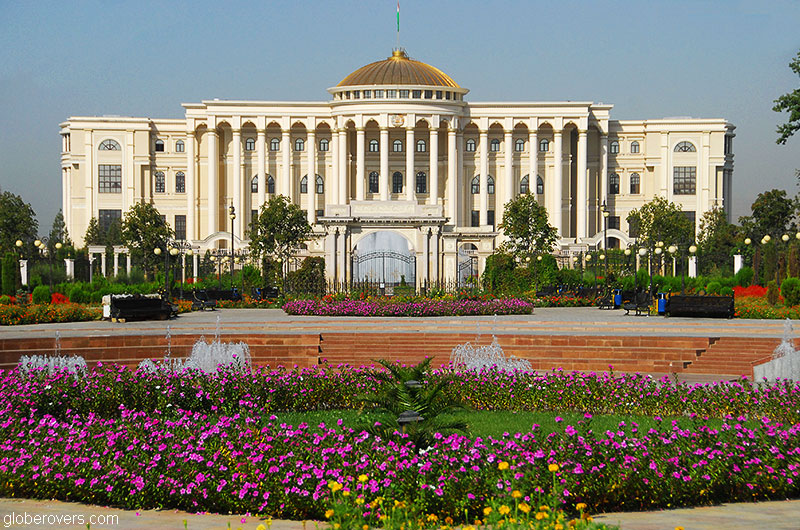
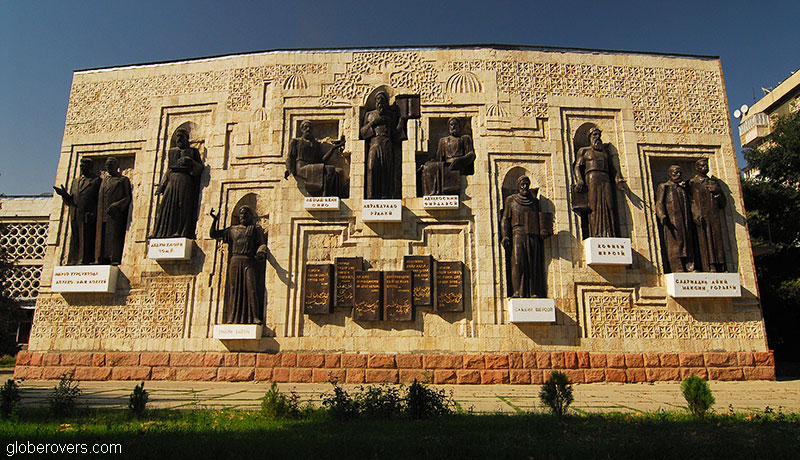
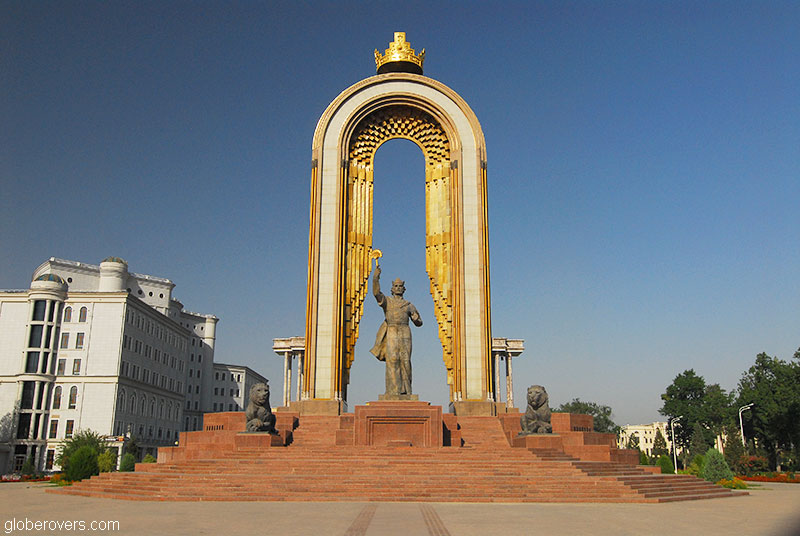
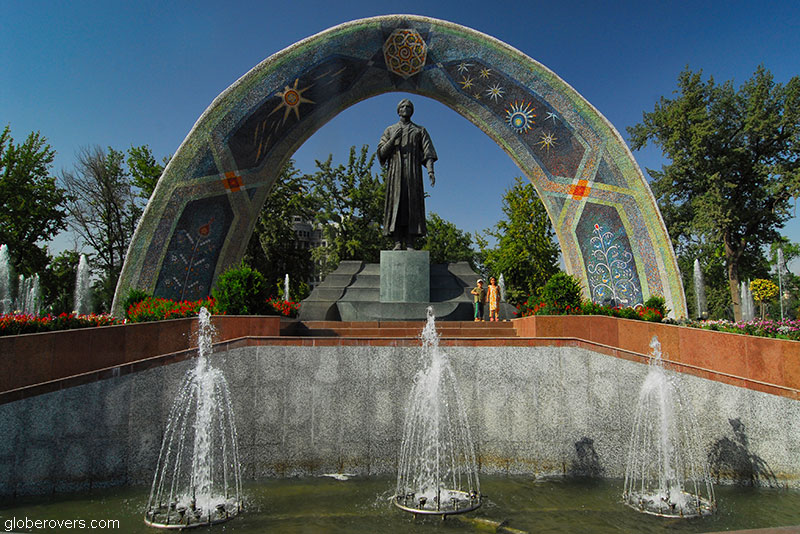

Dushanbe to Khorog
Along the 1,125 km (700 mi) long Panj River (that forms a considerable part of Afghanistan—Tajikistan border), lies the small Tajik town of Khorog (or Khorugh) — 520 km (323 mi) southwest of Tajikistan’s capital, Dushanbe. Khorog is the capital of the Gorno-Badakhshan Autonomous Region (GBAO), a large region in eastern Tajikistan which makes up 45% of the land area of the country but only 3% of its population.
Khorog lies at an altitude of 2,200 metres (7,220 ft) above sea level, high and dry in the Pamir Mountains at the confluence of the Gunt and the Panj rivers.
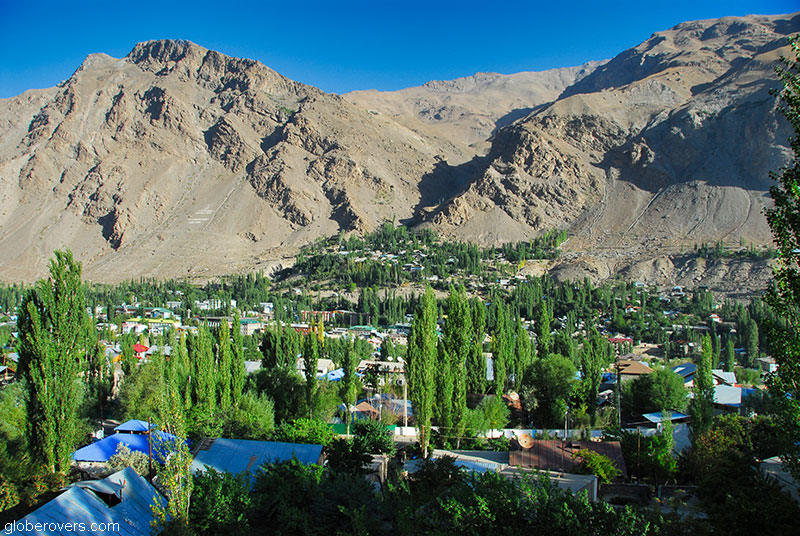
Due to its remoteness, the town is best reached by flight on a small Ukraine developed, but Polish built, Antonov AN-28 turboprop operated by Tajik Air. The infamous daily flight from Dushanbe to Khorog often gets cancelled at very short notice due to unfavourable weather conditions. Some travellers reported being on the runway, ready to take-off, when their flight got cancelled due to high winds in the mountains.
This could be the most exhilarating flight you have ever taken!
This flight is a must for all lovers of mountain scenery while working up a load of adrenaline. The Pamir Mountains along the Afghanistan and Tajikistan border have peaks that reach between 4,000 m (13,120 ft) and 7,500 m (24,600 ft) and the weather is hard to predict and changes fast. The small turboprop 20-seater plane can’t fly over the peaks so it has to zig-zag around the glacier-covered peaks. What an experience!

Once you reach the first set of peaks, it is unlikely that the plane will turn back due to bad weather. Snuck up to the window with your camera and go “whoaaa” every time it seems as if the plane is flying just inches away from the glaciers and rocky outcrops.
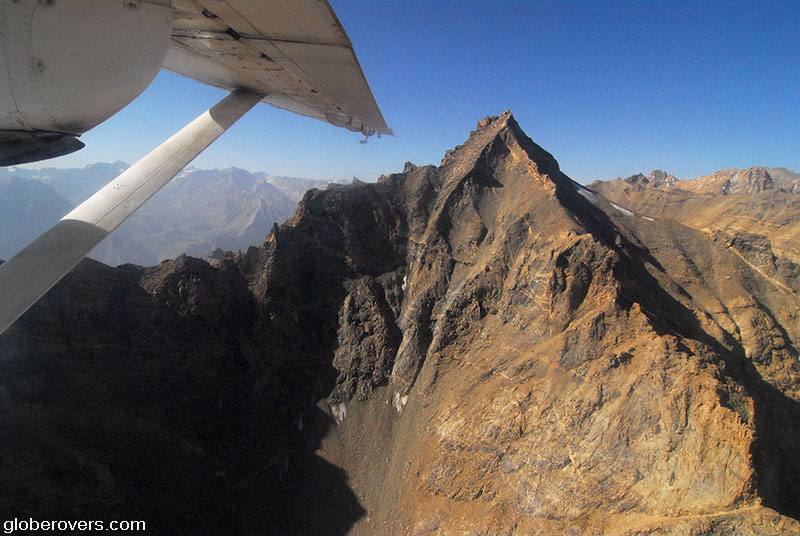
The views are stunning. The plane roughly follows the Tajik-Afghan border marked by the Panj River which is a tributary of the Amu Darya River. On the right side lies Afghanistan and to the left is Tajikistan. If all goes well, about 60 minutes later you will safely land on a small airstrip right by the Panj River, surrounded by the mountains.

UPDATE 2017: Sadly, the plane got too old and was moth-balled so this flight stopped running in 2017. Apparently no replacement plane is available to take over. Whether it will be reinstated, only time will tell.
A possible alternative, costing about US$200, is to fly on the chartered flight of PACTEC, a humanitarian aid organization. A private helicopter from Dushanbe costs about US$1,000.
These days, most visitors to Khorog arrive by shared taxi or private vehicle after a gruelling 12 to 16 hours from Dushanbe or from the east via the Pamir Highway.
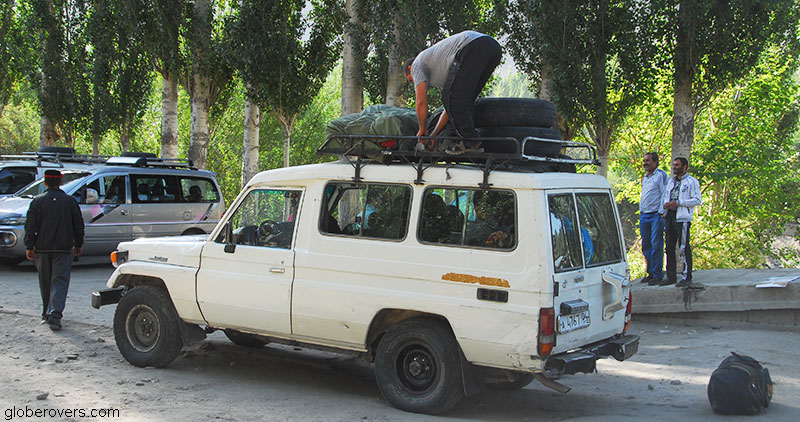
Among the reasons for visiting Khorog is to enjoy the charming town with its interesting residents.
The town is our the starting point for the long eastward drive along the southern Tajik-Afghan border to Murghab, Karakul Lake, and then either west to China’s Xinjiang Province, or further north into Kyrgyzstan. To the immediate south of this route, lies Afghanistan’s Wakhan Corridor.
Another reason for visiting Khorog is to enter Afghanistan. There are two crossings along this stretch of the border. Not far from Khorog, across the river, is the timeless Afghan village of Shughan.


☛ Read more: Timeless Shughnan village of Afghanistan
Khorog Town
Khorog, capital of the Shughnon District of Gorno-Badakhshan Autonomous Province (GBAO) has a population of 30,000 and lies at an altitude of 2,200 metres (7,220 ft) above sea level in the Pamir Mountains. It lies along the confluence of the Ghund and Panj Rivers and is surrounded by mountains.
Khorog has had a tumultuous history. Until the late 19th century, it was in an area whose ownership was disputed by the Emir of Bukhara, the Shah of Afghanistan, Russia and even Britain. The Russians emerged the winners of the region. Life wasn’t easy here under Soviet occupation.
More recently the town made headlines in July 2012 when Tajik government forces clashed with an armed guerrilla group from the semi-autonomous Gorno-Badakhshan Autonomous Province.
While modern-day Khorog is one of the poorest areas of Tajikistan, the Aga Khan Foundation is a major source of cash income.
The Aga Khan Foundation (AKF), based in Geneva, Switzerland, is a private not-for-profit international development agency which was founded in 1967 by the Aga Khan. The Aga Khan is the 49th and current Imam of Nizari Ismailism and is a Swiss based business magnate and racehorse breeder. Born in 1936, His Royal Highness the Aga Khan has an estimated five to fifteen million adherents.
Khorog is also home to one of the three campuses of the University of Central Asia which was founded in 2000 by the governments of Kazakhstan, Kyrgyzstan, and Tajikistan, and His Royal Highness the Aga Khan.

Pies in the oven, Khorog 
Baker at work, Khorog
Khorog is a peaceful town built along both sides of the meandering Ghund River. While there is not much to see in town, the people are friendly, the market is bustling, and the few restaurants offer decent Tajik and Indian cuisines. Khorog is a great base from where to explore Afghanistan across the Panj River as well as for trips into the Pamir region to the east and southeast of town.
One of the most popular places to stay is the peaceful Pamir Lodge, south of the Ghund River and up the hill. Summers are hot and winters are quite cold with tons of snow.
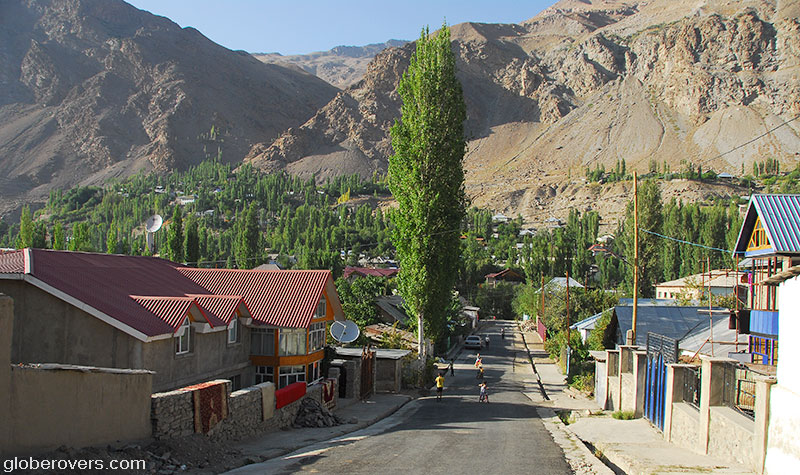
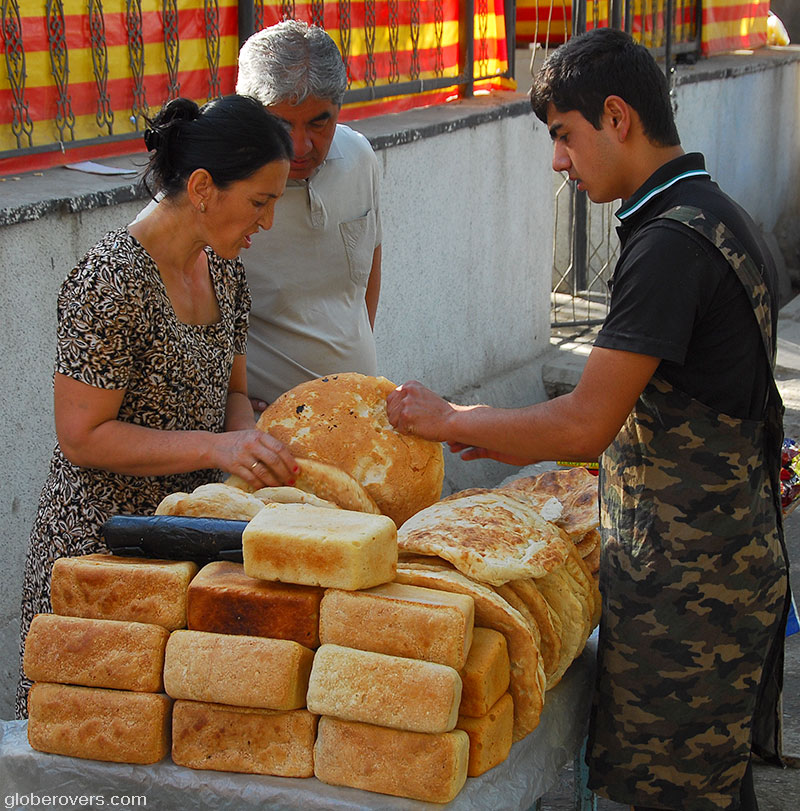
The Afghan-Tajik Bazaar
One of the reasons for visiting Khorog is to prepare for trips into Afghanistan to the west and also into the Tajik Pamir region to the south and east.
In Khorog, arrange a four-wheel-drive vehicle for a four to six day trip to Murghab in the far east of GBAO near the border with China’s Xinjiang Uyghur Autonomous Region.
The authentic Afghan-Tajik bazaar is located on a small island in the Panj River and offers carpets and arts & crafts, as well as local food.
While vehicle and driver rentals are expensive, some skilfull bargaining can bring down the cost. Then, fill up with food and drinks, and head straight south along the Panj River which is the borderline with Afghanistan.
Some 46 km (28 mi) south of Khorog on the left side of the road is the Garam Chashma Hot Springs. The naturally hot springs are thousands of years old, and over the years it has deposited cascades of bright white, yellow and brown chalky-calcium and sulphur. The hot water comes out of the earth in the form of micro geysers, 10 cm to 1.5 metres high. The flow rate is about 7-10 litres per second.
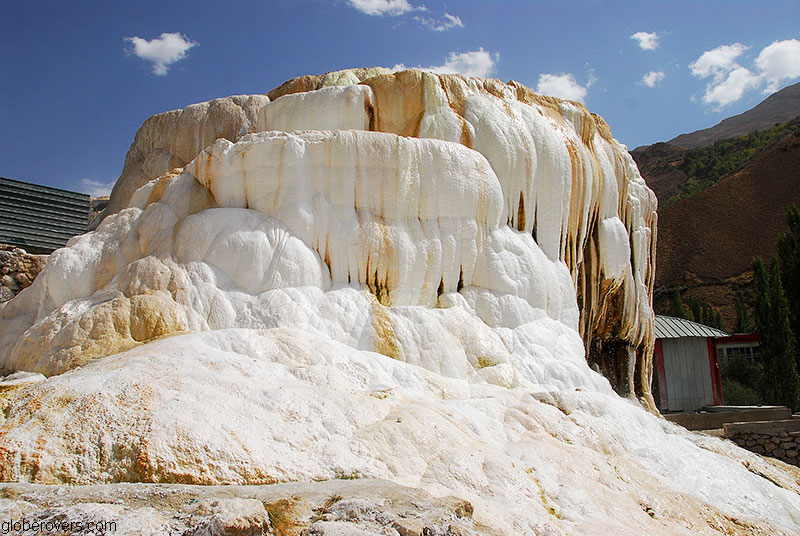
This spring is the warmest one in the westward extension of the Himalayan Geothermal Belt with the water temperature at the exit point of about 62 °C (144 °F). The reservoir temperatures may be as high as 260 °C (500 °F). A small outside pool is used for soaking.
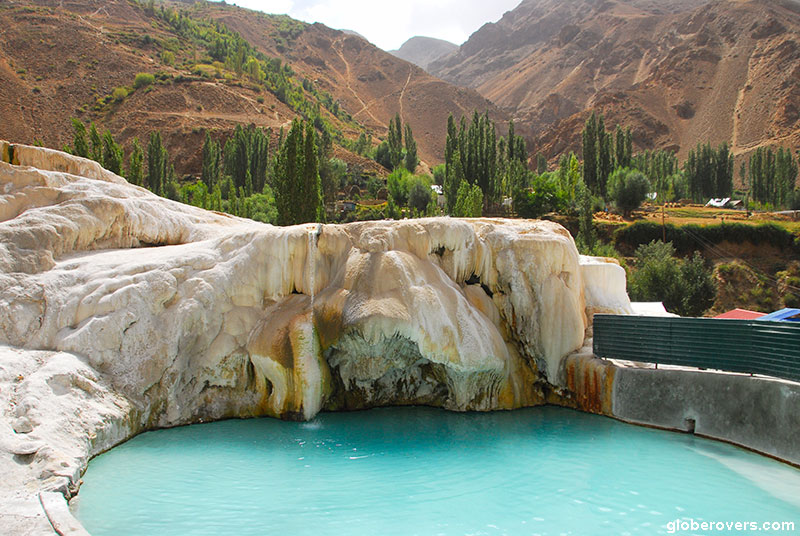
At the small town of Ishkashim, 100 km (62 mi) south of Khorog, stay for a Friday night and visit the Saturday bazaar on a small island in the Panj River. Once the border guards are ready early on Saturday morning, gates on both the Tajik and Afghan sides of the bridge are thrown open and traders with their customers all flock together to the island in this piece of no-man’s-land. Foreigners don’t need an Afghan visa, but must leave their passport with the border guards on the Tajik side of the bridge.


Stock up on Afghan hats, called pakol, and other authentic products from the region. The best thing about the market is the many photo opportunities. Be careful as some people are in no mood to be photographed and the security guards with their massive machine guns may ask you to stop photographing. Follow your own instinct as most people are friendly and don’t mind to be photographed when discretely approached and appreciated.

The Wakhan Valley
Ishkashim, 100 km (62 mi) south of Khorog, is a friendly town with about 6,500 residents. Sleep at the Hanis Guesthouse where the Khorog road enters Ishkashim town.
From here, head into Afghanistan and to the Afghan town of Eshkashem from where expeditions are led through the Afghan Wakhan corridor which is bordered by Tajikistan to the north, Pakistan to the south, and China’s Xinjiang to the far east.
Alternatively, stay on the Tajik side of the Panj River and head straight east down the valley. The remote and barren Wakhan Valley was once a thriving corridor along the Silk Road. Ruins of caravanserais, stupas, forts, and towers, littering the valley testify to a glorious past.

The 400 km (249 mi) long road along the valley to Murghab goes through a couple of tiny villages such as Yamg, Langer and Vrang. Some villages have homestays but camping is allowed almost anywhere. Along the scenic road with mountains on both sides are the remains of a few ancient fortresses such as the Yamchun Fortress and the Ratm Fortress.
The fertile Tajik Wakhan Valley lies on the border with Afghanistan nestled between majestic snow-capped mountains. Remnants of several ancient fortresses stretch along the valley.
The Yamchun Fortress, originally built between 300 BC and 100 BC but expanded between the 10th and 12th centuries, is the best-preserved of all the fortresses in the valley. The fortress sits on top of a highly eroded hill in an area prone to earthquakes and landslides and it is amazing that it still has a few sections standing after all these years.
The fortress overlooks the Wakhan Valley and the Hindu Kush mountains in the northernmost Afghan territories. The fortress is located near Yamchun village from where an 8 km gentle uphill road (or a 4 km of steep climbing along trails) lead to the ruins.
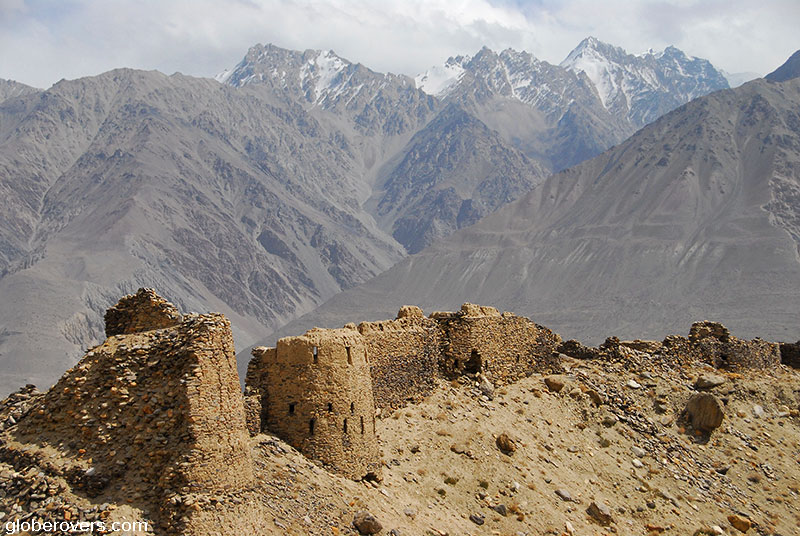
Don’t miss bathing at the Bibi-Fatima Hot Springs outside the Yamchun village to the southeast of Vrang. The bathing area is in a colourful cave with comfortably hot and very clean water. Women and men bathe at different times as a no-clothing rule must be obeyed.
As most of the homestays in Tajikistan would not provide you with a hot bath, Bibi Fatima Hot Springs is the place to go. The springs are located in a simple concrete building against the rock face where the hot water emerges. The hot water comes from a fine stalactite cave with the length of it unknown. You literally bathe in a flooded cave. The water in Bibi Fatima contains no chalk and is crystal clear.
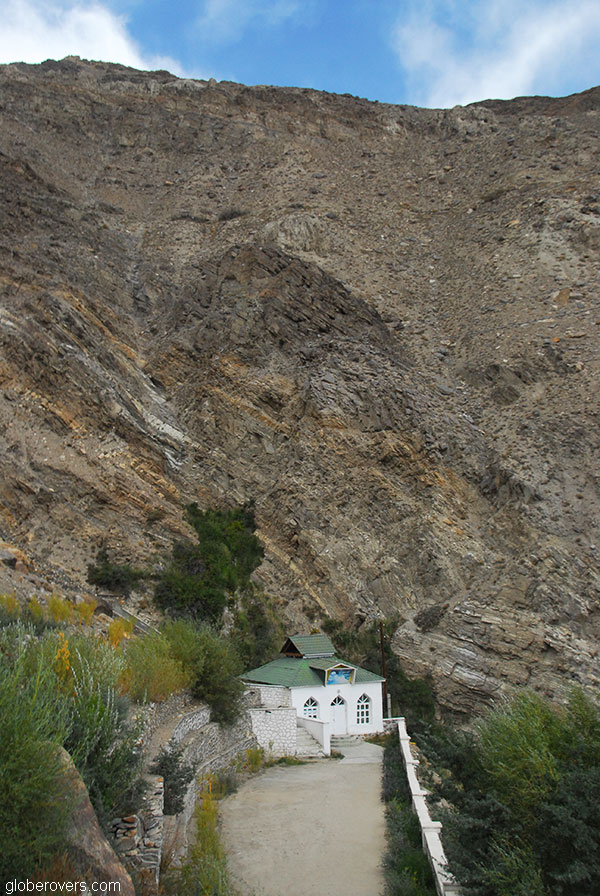
The valley is fertile and most of the villagers work on farms and have livestock such as horses, sheep and goats. This is sheep-country so make sure to eat lamb and mutton shashlik (a form of shish kebab) at every opportunity.
Between Langer village and the main Pamir highway to the far north, the road is spectacular and devoid of any permanent settlements.
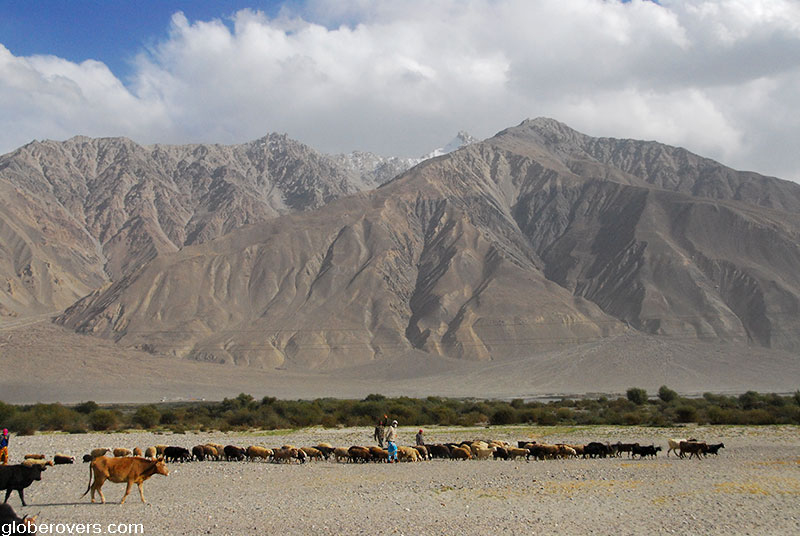

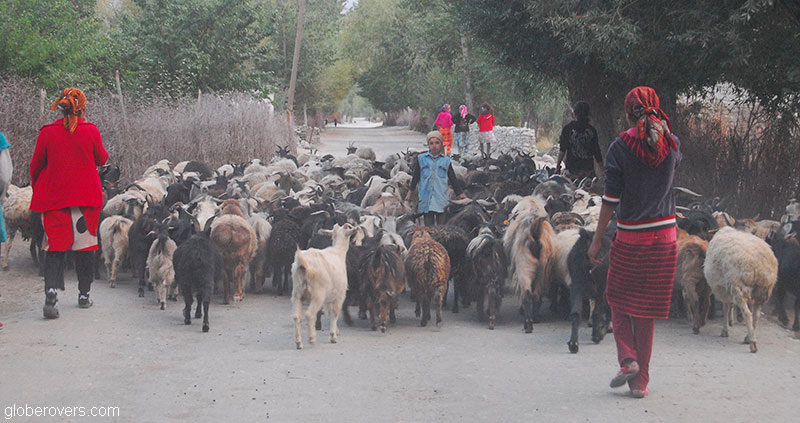
Some 500 m (1,640 ft) off the main road in Yamg is the reconstructed house-museum of Sufi mystic, astronomer and musician, Mubarak Kadam Wakhani (1843–1903). One room contains ethnographic artefacts and 27 books and 17 poems of the master. Hidden under Stalin’s rule, they escaped destruction.
The other room is designed as a classic 19th-century Pamiri home with traditional instruments on display. The staff are friendly and happy to demonstrate some musical instruments and explain the exhibits.
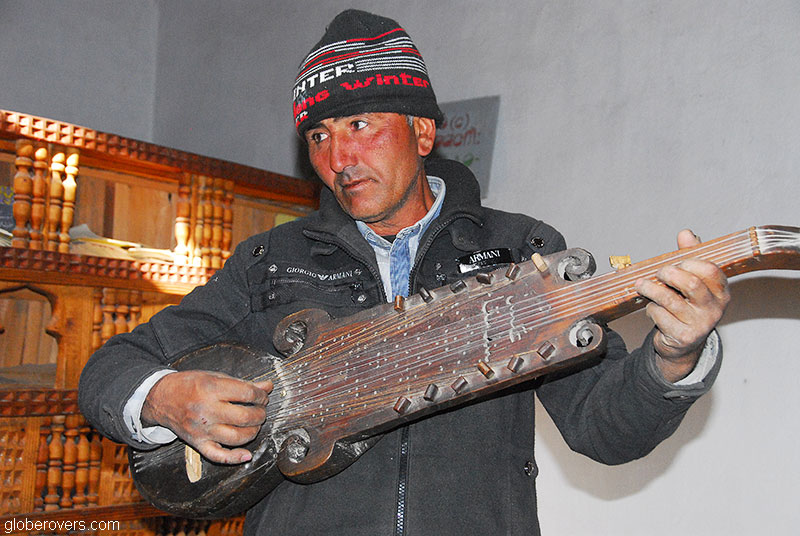

Eastern Tajikistan
After Vrang village, the next settlement worth stopping is Bulunkul village which lies 134 km (84 mi) to the northeast just past the junction at the main Pamir Highway. Located close to Lake Bulunkul, the small Bulunkul village lies in the upper Gunt Valley of the Pamir Mountains. The village is windswept and apparently one of the coldest (and loneliest) villages in Tajikistan.
Windswept and bitterly cold Bulukan Village must be one of the loneliest villages on earth. Even in summer the kids’ faces are still dry and cracked from the winter cold!
Have lunch with the locals in their modest home for a small tip. Vodka flows at all times of the day. Spending time with these friendly folks is an unforgettable experience!
The road past the village leads for 1.5 km (1 mi) to a freshwater lake named Yashilkul (Green Lake). It is rather shallow with a maximum depth of 52 metres (171 ft).
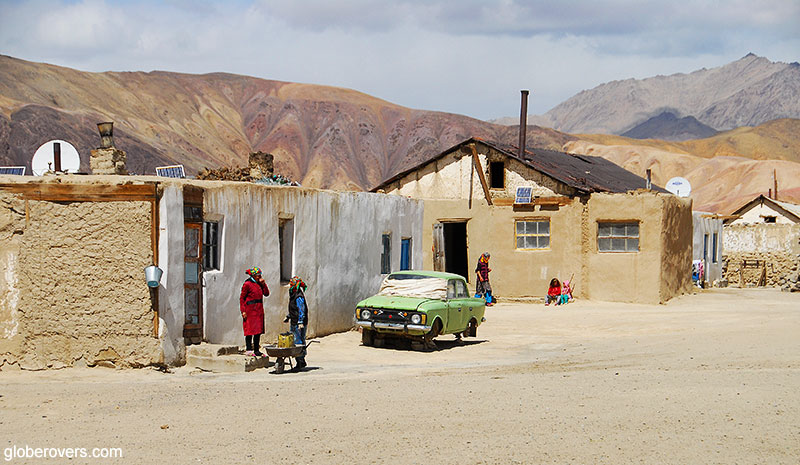
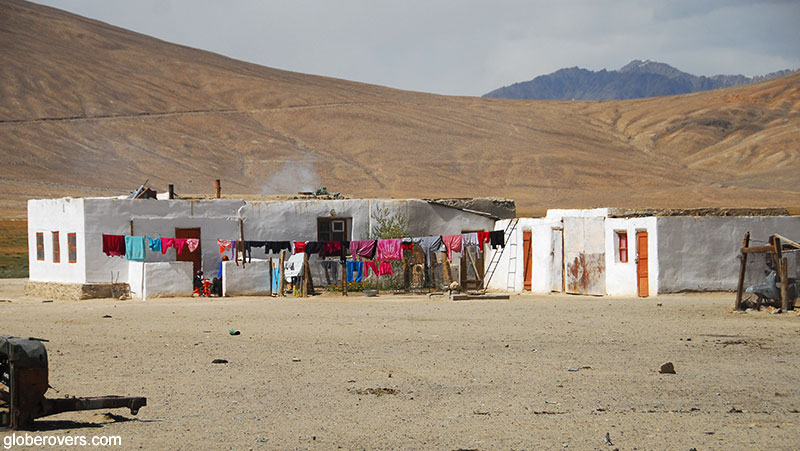
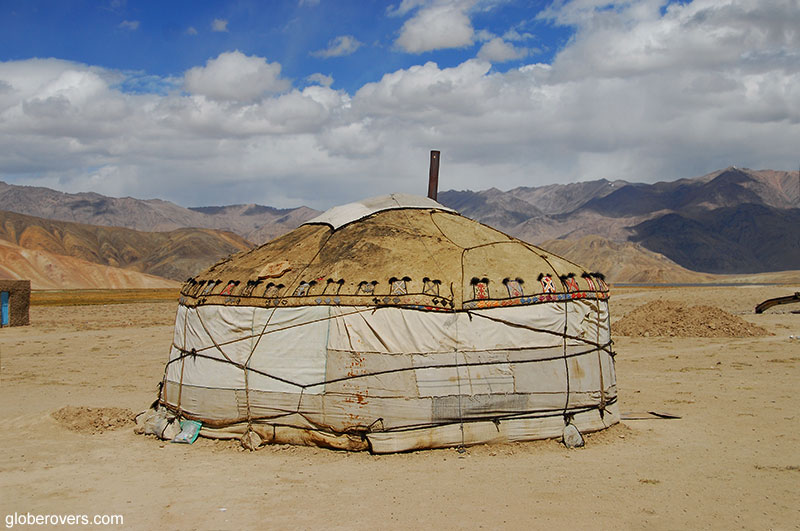
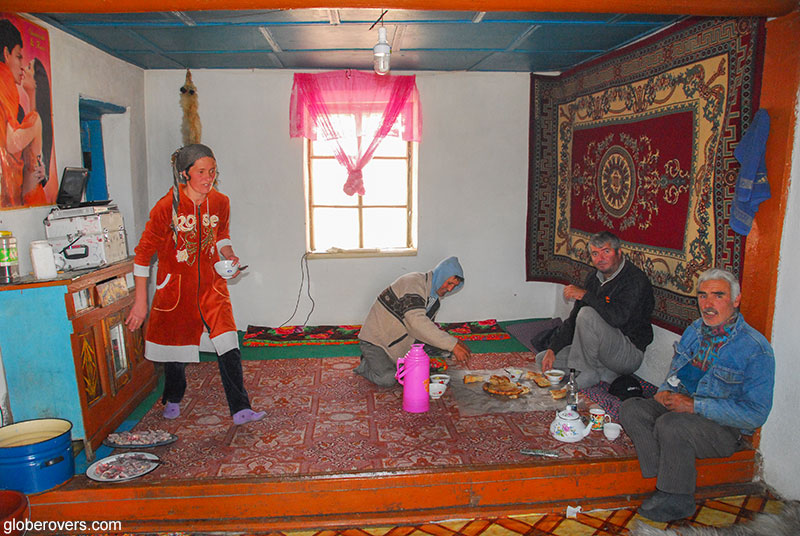
If it’s not laundry day for the village ladies with their kids, then the hot waters can offer a soothing soak. Both lakes are surrounded by wetlands as well as sand and pebble plains that form part of the “Bulunkul and Yashilkul Lakes and Mountains Important Bird Area.”
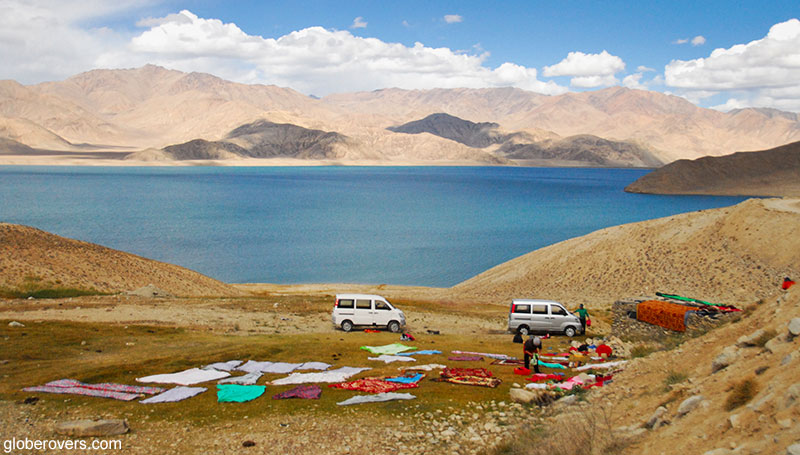
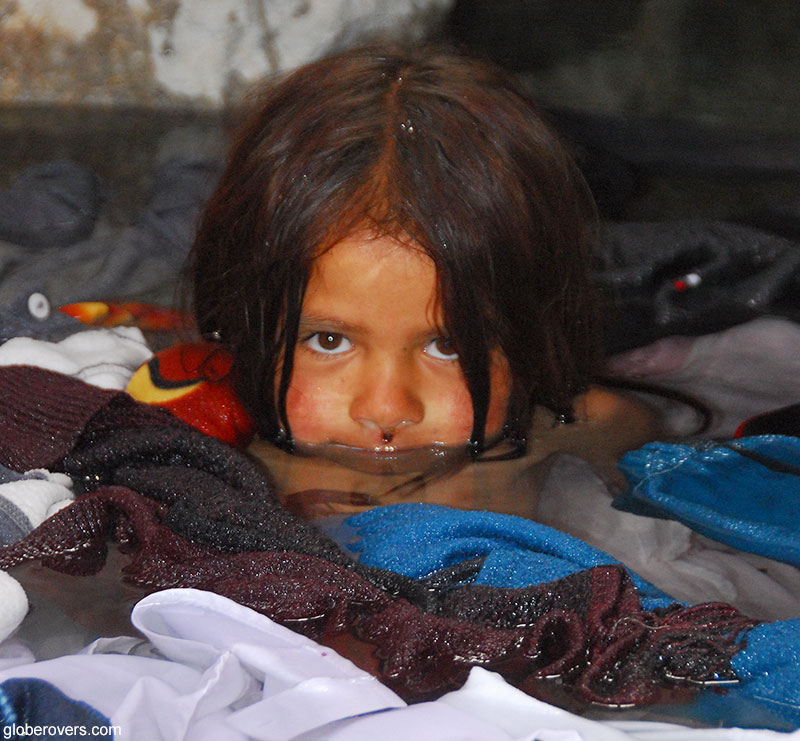
The drive further east to the town of Murghab is scenic as it passes colourful mountains. Murghab itself is just good for a one night stay over. The next morning leave early and drive north to the lake of Karakul (black lake) located in the Markansu Valley, one of the driest places in Central Asia.
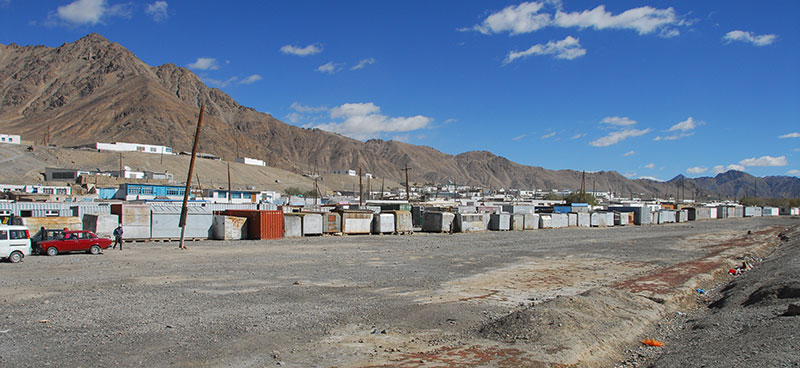
The lake lies within the Tajik National Park at an altitude of 3,900 m (12,800 ft). It is 25 km (16 mi) in diameter with a maximum depth of 230 m (755 ft). As the lake is an endorheic basin with three rivers flowing in but with no drainage outlet, the water is brackish but beautiful to look at.
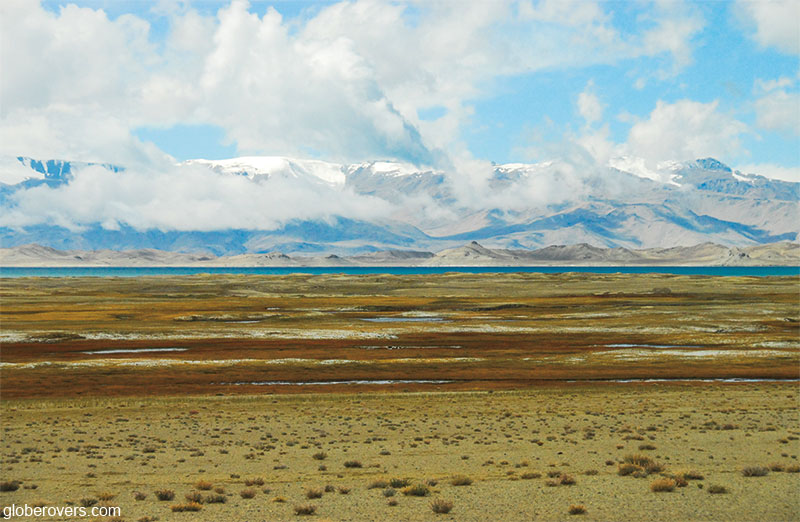
Stay for a few hours or overnight at the small village named Karakul on the eastern shore of the lake. From here the road goes north through spectacular scenery before it is time to cross the border into Kyrgyzstan.
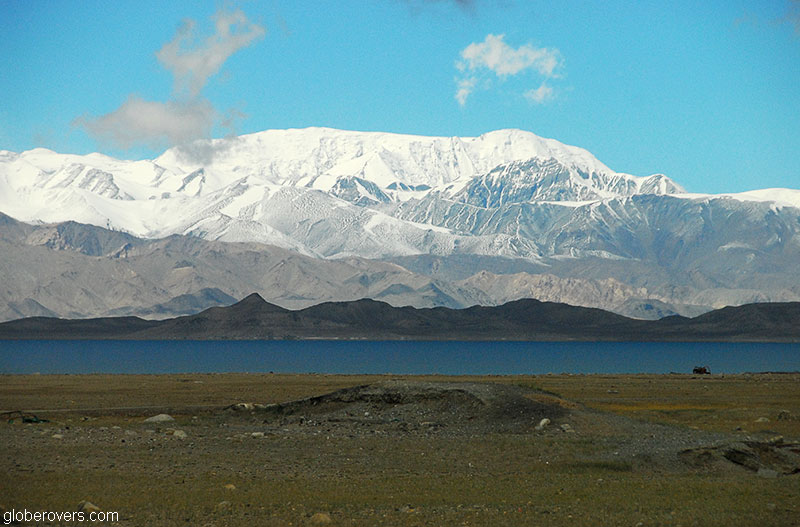
Once you crossed the border into Kyrgyzstan, the next village, Sary-Tash, is 40 km (25 mi) to the north. Here the road goes east to the China border (65 km / 41 mi) to the Irkeshtam crossing. Going north of Sary-Tash the scenic 186 km (116 mi) road leads to the Kyrgyz town of Osh.

Essential Information
Getting there
Few airlines fly into Dushanbe so unless you can fly in from one of the few countries with air links to Dushanbe such as Russia, Turkey, Iran, Kyrgyzstan and Kazakhstan, your best bet is to enter via road from Uzbekistan or from Kyrgyzstan. The long border with China remains closed while the few border crossings with Afghanistan are best avoided due to possible conflict at Afghan towns further away from the border crossings.
When to go
Summers are hot and winters are bitterly cold with long stretches of roads, in particular in the Wakhan Valley, closed due to high snowfalls. The best time is spring and autumn when the weather is perfect for travelling.
Getting around
Public transport is poor, so most short and long trips are taken with shared taxis which can be very uncomfortable. More comfortable, but costly, is to rent a four-wheel-drive vehicle with driver.
Where to stay
Tajikistan has some loose organisations to coordinate homestays. As you travel with your rented vehicle and driver just leave it up to the driver to find accommodation. He most likely has a network of locals where you can stay at very affordable rates, including full board if required.
Cost of travel
Other than the high costs of vehicle and driver rentals, which is blamed on high fuel prices, travel in Tajikistan is very affordable. Accommodation and food are of acceptable quality and available at low prices.
☛ Read more: Blog posts of Central Asia

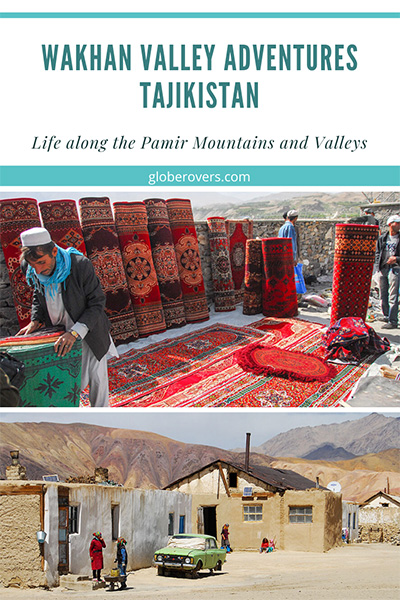

Blog post and photos by Peter who has been travelling almost full-time since 2005 and has been to over 122 countries. He visited several countries, such as Japan, more than 20 times. Peter is Editor-in-Chief and Publisher of GlobeRovers Magazine, an independent travel magazine focused on intrepid destinations.

